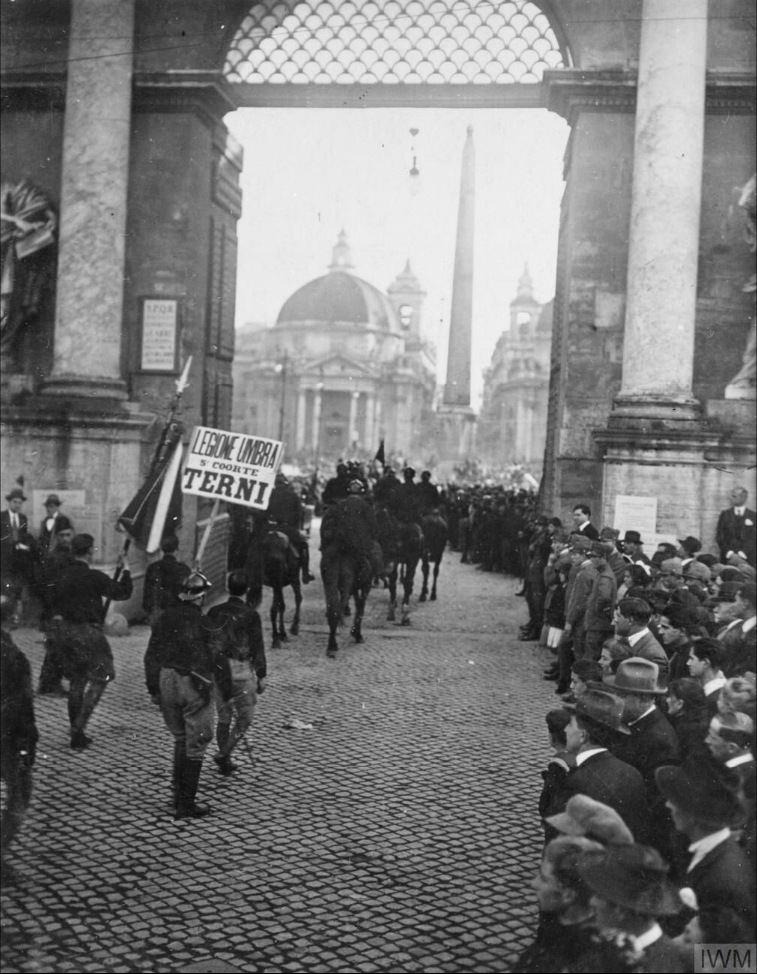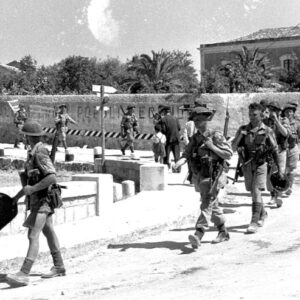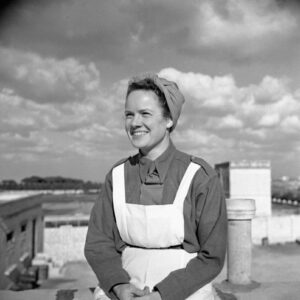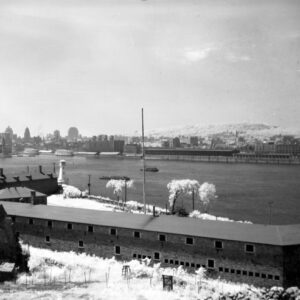ITALY AND WORLD WAR II
THE RISE OF FASCISM
After the First World War and the signing of the Treaty of Versailles, Italy fell into turmoil, with many far-left and far-right political groups attacking each other across the country. This volatility reached a tipping point at the end of October 1922, when Benito Mussolini and his supporters, called the “Blackshirts,” invaded Rome and forcibly seized power.
In just a few years, Italy became a totalitarian country, where human rights were dissolved to concentrate power for the charismatic Mussolini. As the head of the country, Mussolini wanted to build a society based on his new doctrine of fascism.
When war broke out in Europe, Mussolini’s Italy immediately joined Nazi Germany in its military campaigns. Italy then launched its own military operations in Europe and Africa up until 1943 and occupied territories such as Libya, Ethiopia and Greece.
What is fascism?
Fascism is a far-right revolutionary ideology that is:
– Antidemocratic: Fascists are convinced that their country is in decline and must be saved by a powerful leader. For the Italians, Benito Mussolini was this leader who had to reign over the nation uncontested and have unconditional support from the nation.
– Militaristic: The army represents absolute power and serves both to maintain order and fight abroad. War is the engine of a fascist society, and everyone must contribute to the nation’s glory through military service, work or family. In Italy, this was clear from the military operations carried out in Europe and Africa between the wars.
– Intolerant: Fascism is also an ideology that is opposed to the “other.” Sexual, political, ethnic, religious and other minorities are systematically discriminated against in favour of rights for the majority population. Jewish populations, for example, were particularly impacted by the Mussolini regime’s discriminatory laws.
THE ITALIAN COMMUNITY IN CANADA
At the time of these events in Europe, Canada was already home to a large Italian diaspora. The first Italians came to Canada in the early 20th century and settled in the country’s largest cities, where they established their own “Little Italies.” They created tight-knit communities with their own activity hubs, businesses and churches where they could continue their language and culture.

When Mussolini came to power in the 1920s, many Italian Canadians adhered to his fascist ideology and were encouraged by Italian embassies and consulates to join militant groups. In Montreal, Italian cultural institutions were taken over by these militants, who gave out pamphlets, newspapers and other political materials. Fascism was also supported by the Catholic Church as well as major nationalist players, which further spread the movement among the population. As a sign of high support for Mussolini, the heads of the Church of the Madonna della Difesa in Montreal’s Little Italy commissioned a large fresco painting of him inside the church.
However, fascism remained a somewhat marginal movement, and support for this ideology among Italian Canadians was limited. Over the years, the Mussolini regime gradually lost acceptance from Italian Canadians, with a first decline after the invasion of Ethiopia in 1935 and then a complete loss of favour when Mussolini declared war against Canada’s allies on June 10, 1940. However, despite this change of heart, many Italian Canadians became targets of the Canadian government during the war.
John Giovani di Lucia:
An Italian Canadian in Italy
Born in Ortona, Italy, in 1913, John Giovani di Lucia immigrated to Canada with his family and settled in Ontario. After studying German, Spanish, French, Italian and Latin as part of his linguistics program at Syracuse University, John di Lucia enlisted in the Royal Canadian Air Force on December 28, 1942. Because of his fluency in multiple languages, he was soon approached to work as a special agent with the British Special Operations Executive (SOE). After being deployed in Italy, John di Lucia led sabotage operations against the German army. Unfortunately, he was captured and then executed on May 12, 1944.
THE MILITARY SITUATION IN EUROPE
The year 1943 was a key turning point. In February, following the Battle of Stalingrad, the Red Army fought back the Wehrmacht and launched its advance into Eastern Europe. In mid-May, after almost three years of hard fighting, the Allies won the North African campaign and captured all enemy positions in this region. For the first time since the war started, the Axis forces were in a disadvantaged position.
However, Great Britain and the United States disagreed on the strategy to break the enemy armies. While the United States wanted to liberate France as quickly as possible, Great Britain had set its sights on full control of the Mediterranean. They finally compromised and decided that the Allies would go to Italy and then land in France the following year. A second front would serve several purposes: dismantle Mussolini’s government, divert the attention of the German army, relieve pressure on the Soviet front, and control the Mediterranean.
For Canada, a new front in Italy was a golden opportunity to play a greater part in the war effort. While it was one of the first Allied countries to declare war on Germany, Canada did not have many opportunities to stand out at the front. For Canadian generals, a long campaign in Italy was an ideal stage for their troops, who were still largely on the sidelines.
Pritam Singh Jauhal:
A soldier in North Africa
While few Canadians took part in the North African campaigns, thousands of Indian and Sikh soldiers were sent to this region as a force of the British army. Some, such as Pritam Singh Jauhal, went on to become Canadian citizens. Originally from the Punjab province in India, Pritam Singh Jauhal was born into a poor family in 1920. Jauhal joined the Indian Army and in 1940 was deployed to Africa, where he fought against the Italian army in Sudan, Eritrea, Ethiopia, the Maghreb and Libya. After the war, Jauhal remained in the army until his retirement. After he and his wife immigrated to Canada in 1980 and until his death, Jauhal became a leader for Indian and Sikh veterans. He founded the Indian Ex-Servicemen Society of British Columbia to help many widows secure financial compensation from the Indian government and campaigned for veterans to be able to wear their turbans at official gatherings.











